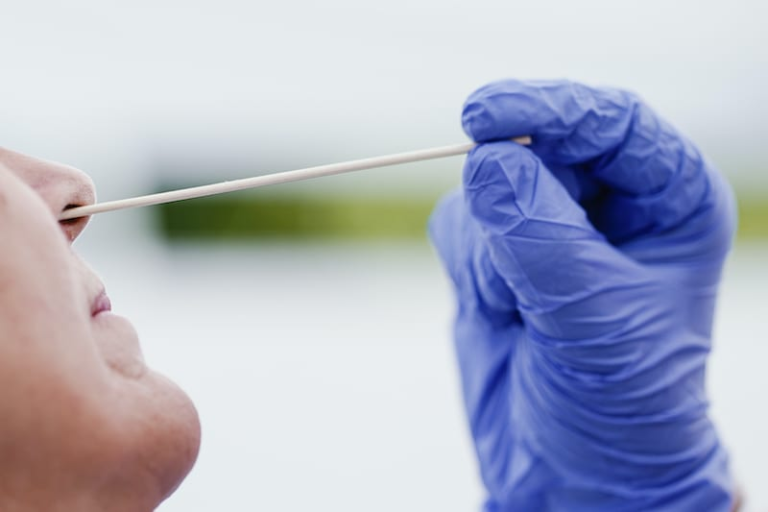Ethylene oxide (EtO) is primarily used to produce chemicals such as antifreeze. But in smaller quantities, EtO is also used as a pesticide as well as a sterilizing agent in medical settings.1 The ability of ethylene oxide to damage DNA is what makes it effective as a pesticide and sterilizing agent, but is also what makes the chemical a threat to human health and designated by the Environmental Protection Agency (EPA) as a carcinogen when inhaled.
EtO gas is also used to sterilize swabs used for polymerase chain reaction (PCR) tests to detect the presence of the SARS-CoV-2 virus that can cause COVID-19. The U.S. Food and Drug Administration (FDA), local health departments, and other experts claim the EtO used in the swabs is completely safe.2
Ethylene Oxide Also Found in Baby Wipes, Cosmetics, Plastics
Despite being one of the most common sterilization tools in the health care industry,1 EtO is heavily associated with lymphoma due to occupational exposure or accidental exposure from leaks at sterilization plants. Stomach and breast cancers may also be associated with exposures to the chemical. Sources of exposure for the general population may be through medical equipment, cosmetics, baby wipes, cleaning products, plastics, polyester clothing, and beekeeping equipment.1
Some scientists argue that in the form of the nasal swab used for SARS-CoV-2 testing, the harmful effects of EtO are not applicable. “As [ethylene oxide] is a gas, there is no way it can be carried forward after the manufacturer into any of these products. We know this from decades of safety and toxicity research. The use is strictly controlled and regulated,” said Dr. Alexander Edwards, associate professor in biomedical technology at the University of Reading in England.2
Ethylene Oxide Banned in Europe
Governments in Europe have banned or restricted the use of ethylene oxide as a fumigant in food products. In February 2024, the European Union (E.U.) banned vanilla extract from the United States due to the frequent presence of EtO.3 The European Parliament has brought into question the presence of EtO in PCR test swabs since it is considered unsafe in food products. The government of the United Kingdom responded to this concern stating that the swabs fall under the category of limited contact time with EtO, posing a “minimal risk.”4
State Health Agencies Dispel “Myths” Surrounding Ethylene Oxide
U.S. state health departments have released flyers and other educational tools, which public health officials say answer questions and dispel “myths” surrounding ethylene oxide. However, the language is misleading. One commonly used justification included in the handouts is that EtO is used in everyday products such as laundry detergent and shampoo.5 6
What has gone unmentioned is the fact that the EPA advises against use of products that contain EtO because of its carcinogenic properties. Some flyers also refute the claim that ethylene oxide is used in antifreeze, stating that it is actually a similarly named chemical known as ethylene glycol used in antifreeze. While this is partially true, EtO is, in fact, used to make up the ethylene glycol found in antifreeze.1 None of the flyers mentioned the fact that ethylene oxide is a known carcinogen. A flyer from the Washington State Health Department states:
The process for sterilizing COVID-19 swabs is highly regulated and completely safe. Swabs are sterilized through exposure to ethylene oxide gas for a short, controlled amount of time. The sterilization process is assessed and evaluated from beginning to end to ensure the swab meets the rigorous safety standards of the FDA. There is no residual trace of ethylene oxide on the nasal swab when it is packaged.5
The flyer does appear to withhold important information from the public about the presence of a carcinogen in the testing swabs—information to which individuals should have access to when determining for themselves whether the risks involved in getting tested for COVID outweigh the theoretical benefits.
If you would like to receive an e-mail notice of the most recent articles published in The Vaccine Reaction each week, click here.
Click here to view References:2 Reuters. COVID-19 nasal swabs sterilized with ethylene oxide are safe to use. July 27, 2021.
3 McConnell T. US manufacturers persist in use of cancer-causing ethylene oxide despite bans abroad. Environmental Health News Feb. 20, 2024.
4 Government of the United Kingdom. FOI release: freedom of information request on use of ethylene oxide to sterilize swabs used in testing for Covid-10. Apr. 29, 2021.
5 Washington State Department of Health. COVID-19 testing in schools: Common questions and answers. Oct. 2021.
6 Shasta County Health and Human Services Agency. COVID-19 testing: questions and answers about swabs.













2 Responses
I researched this ETO link to the swabs back in 2021 when ‘they’ swabbed our noses, us religious exemption folks, twice weekly, to test us for what they call covid, more like to punish us for not complying with the jab-taking mandates…
So glad they did not mandate the jabs the next year…hmmm
Not the vanilla extract! That’s what we use for home made orange julius drinks in the summer. Oh no, going to have to pay closer attention to that product for organic sourcing. And another detail which threatens the bees. We need to save the bees, literally over half of all food supply on this planet depends on our ability to prioritize the bees. Has anyone heard of soap and water?
Would everyone like to play a real fun game? It’s called sticking a two foot long cotton swab on a stick all the way up everyone’s nose until someone cries uncle. Come on, it’s fun. You should try. Remember kids; Safe AND Effective.
Would anyone happen to know what happens when salt that is already present in the human body is combined with ethylene oxide under normal environmental conditions? Who’a bro, I feel sort of light headed and dizzy… Wow. What a rush.
From Wiki: Ethylene oxide achieved industrial importance during World War I as a precursor to both the coolant ethylene glycol and the chemical weapon mustard gas. / Checks out, sounds legit.